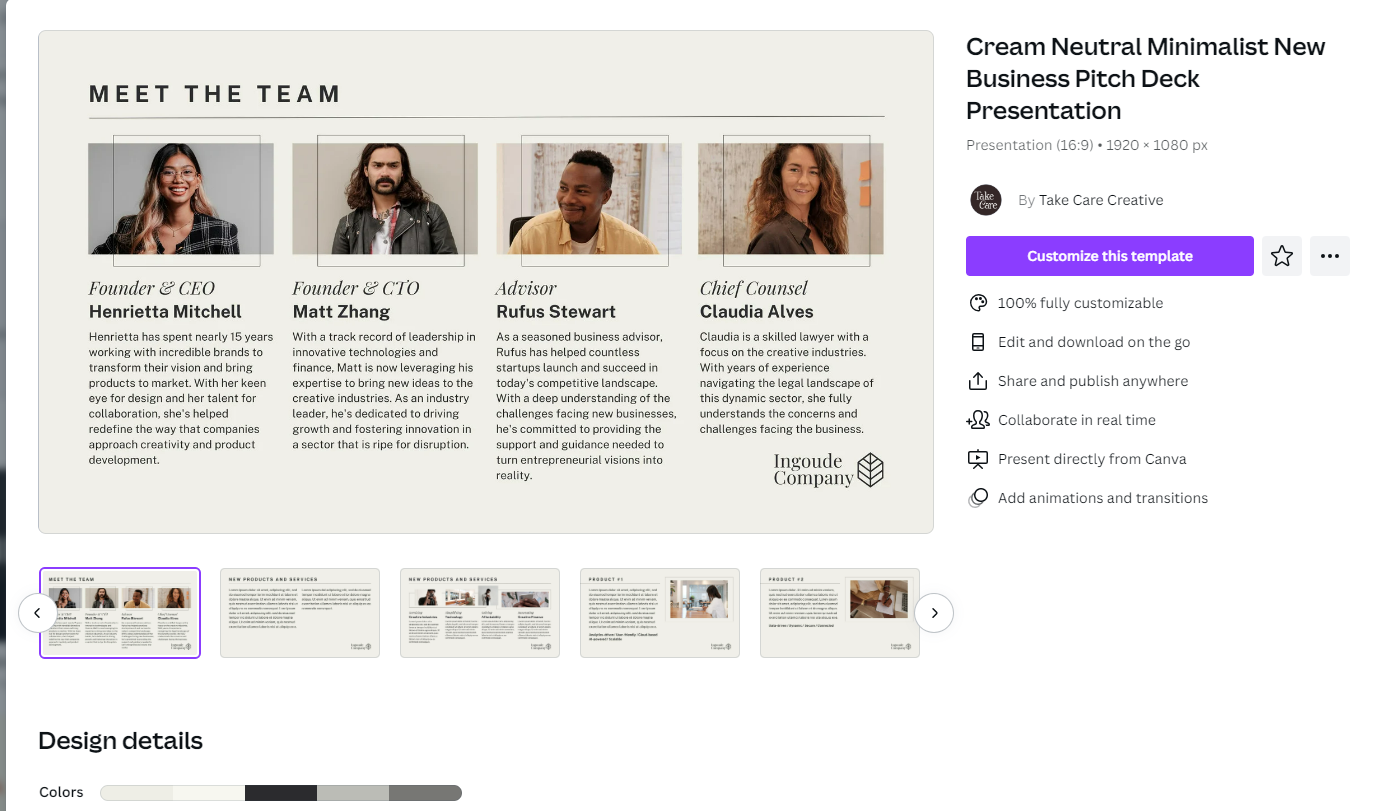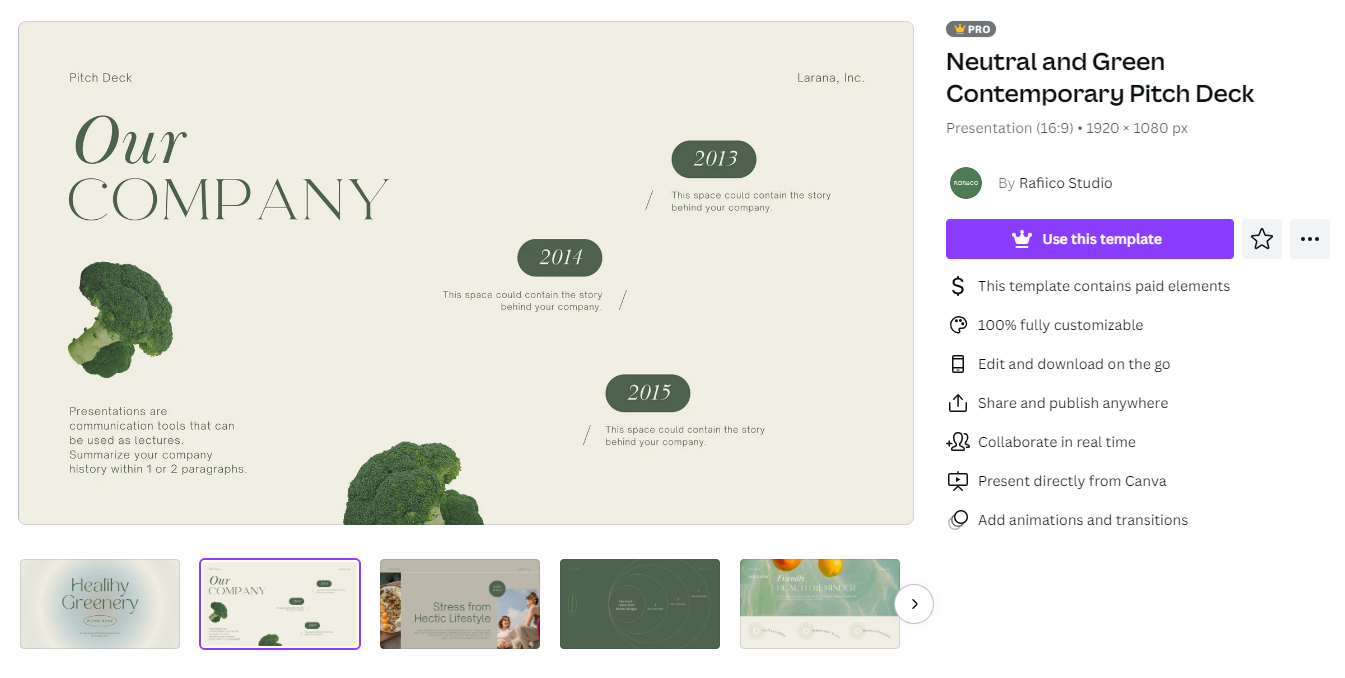
Right now, you might not be sure how to create a business plan. Or what a business plan even actually looks like. And that’s entirely understandable, because actionable advice — and real life examples — of business plans are thin on the ground. We know, we’ve checked.
But by the end of this guide you will feel a lot more confident in how to write a business plan (and, optionally, to design it) with examples to support you along the way.
We also got our founders to give their feedback on this guide and check we got it right, so you can be sure it’s the real deal. Let’s get started.
What should your business plan include?
Before we get into formatting your business plan and looking at our favourite templates, it’s time to start with the substance of your business plan, and the eight elements every plan should include:
1. An overview of your business (executive summary)
🎯 Your business in a nutshell, along with your mission/vision
These are the very first words of your business plan. And while you definitely need to get across the basic facts, you also want to sell the vision here a bit, too.
If your business already exists, this is also where you should give a brief overview of your business’s history; how it came about, how long it has been operating, and how it has changed and grown in that time. End with your mission, and your vision for the next step.
2. Market research
🎯 Why here, why now? How big is the market? Is there room for you?
These are the kinds of questions you want your market research to cover. Show you know the space, use qualitative and quantitative data to show there’s demand for what you’re proposing.
Let’s say you wanted to open a bookshop in the fictional town of Colaton. Here are some things you might include in your market research section:
- The Guardian reported ‘The number of independent bookshops in the UK and Ireland climbed to a 10-year high in 2022’
- For residents of Colaton, the nearest bookshop is around 10 miles away in Exeter
- Colaton is a fairly wealthy town, with average wages around 20% above the national average
- There are several book groups in Colaton, and requests for book shop recommendations often appear in the ‘Residents of Colaton’ Facebook group
3. Your profile, and your team’s profile
🎯 Why are you the best person to bring this idea to life? How will your credentials and experience help your business succeed?
When it comes to getting investment, or taking out a loan, your attitude and profile can be as important as the idea itself; you are what they’re really investing in, after all.
This doesn’t mean you need to be an expert in all elements of your business — you just need to demonstrate your key skills and characteristics, and how you will surround yourself with a strong team that will complete your skillset.
Let’s go back to the bookshop example, and say it’s two friends called Amy and Charlotte who are opening the shop together:
Amy studied English Literature at the University of Cambridge, and worked in Heffers Bookshop alongside her studies. After graduating, she started working at Penguin, and became an editor in three years, where she honed her ability to spot and nurture a future bestseller.
Charlotte is a literature-loving marketing expert, with over 10 years of experience in world-class marketing agencies in London and New York. She’s an expert at building engaged communities for brick-and-mortar B2C businesses, as well as bringing people together through events.
4. Your go-to-market plan
🎯 How are you going to make sure people are coming through the door (literal, or proverbial) from day one? What are your key marketing and distribution channels? Do you already have an engaged audience?
Unlike your overall marketing strategy, which is also important, the go-to-market plan focuses solely on the launch of your business or product, and making sure it’s a success.
This looks different for each type of business or product, but whatever your business, try to attach some numbers and dates here to really ground your ideas. Like the number of followers you expect to hit on social media, the number of people you expect to attend your opening event, and of these how many you predict will convert (buy from you).
Some elements of our bookshop’s go-to-market strategy could be:
- (1 year pre launch) Form a book group in the local area
- (6 months pre launch) Create an account for book lovers on Instagram and TikTok
- (3 months pre launch) Launch the bookshop website and ecommerce function
- (3 months pre launch) Work with an SEO agency to optimise the website for local searches
- (3 months pre launch) Secure authors for opening week of events at the bookshop
- (2 month pre launch) Start promoting launch party on social media (target 200 attendance)
- (2 months pre launch) Secure launch week collaborations with other local businesses
- (1 month pre launch) Advertising the bookshop as ‘Coming soon’ with an eye-catching display in the shop window
- (1 month pre launch) Anna to speak at local WI meeting about the world of publishing
- (2 weeks pre launch) Distribute flyers throughout the local area
This is by no means comprehensive, but is the kind of thing you should look to incorporate. And be sure to include anything you’ve already done that contributes to your go-to-market strategy, too. Anna, for example, may already have built a book-themed personal Instagram account with transferable value.
5. Competitor SWOT analysis
🎯 How do your strengths and weaknesses compare to those of your competitors? Who are your competitors, and how are you different? What’s your USP?
SWOT stands for strengths, weaknesses, opportunities and threats.
- Strengths are the standout features of a business, and what it excels at versus others
- Weaknesses are what the business isn’t doing so well on
- Opportunities are where a hypothetical external change could be of benefit to this business
- Threat is where the opposite is true, and an external change could harm the business
As part of your competitor analysis section, you should run a SWOT analysis for your own business, and your key competitors, as well as reporting more broadly on the competitive landscape of your area.
For a bookshop, your competitors aren’t just other local bookshops. Amazon, whilst very different, is almost certainly a major competitor. A local charity shop with a large book selection would be, too.
While it might be tempting to minimise your business’s weaknesses here, as well as the strengths of your competitors, it’s best to be as upfront and honest as possible here.
6. Cost forecasting
🎯 How much will it cost to launch your business, and how much will it cost to run?
Costing up any business is hard. And when a physical premises is involved? Harder still.
We’ve broken down some of the key costs of opening and running a shop in a previous post, but this is naturally going to be different from business to business.
A lot of the numbers in your business plan so far are based on assumptions, but with some heavy research, you should be able to get pretty exact figures here; it’s a chance to really demonstrate your attention to detail, and that you’re committed to getting down into the numbers of your venture to make it a success.
7. Financial projections
🎯 A breakdown of what revenue you expect to achieve each month, when you expect to break even, how your revenue will grow over the next few years, and how you will fund the business.
Ultimately, it’s best to build your financial projections (or get help building them) as a financial model in excel. That way, if you want to change one figure, it will show how this will affect total costs, incoming cash, and projections for the months after. You can then link back to your financial model from your main business plan, where you can keep the figures more top level.
You might be tempted to inflate all the numbers to the best case scenario, or to do the complete opposite and be as conservative as possible.
In fact, you should do both. In your plan, show an overview of the topline numbers from three scenarios; best case, worst case, and base case (what you think is most likely — somewhere in the middle of the other two).
8. Your growth plans
🎯 How do you see the business evolving over the next five years?
Back to the vision. Your growth plans should be closely aligned with your financial projections, but with space for a bit more flair.
End your business plan on a high with a look at how your business will look one, three, and five years from launch (or beyond that, if you can).
How will your team look? What new growth channels will you be exploring?
Going back to our bookshop example, these growth areas to explore could be:
- Running paid events, or hiring out your space for external events
- Selling coffee and other hot drinks
- Selling merchandise
- Expanding the ecommerce side of the business
- Running a paid book club
- Starting book subscription boxes
Tips on making your business plan effective
If you are going to be sharing your business plan with potential investors or financial partners…
1. Keep it clear and concise
This isn’t the place to house every thought and dream you’ve ever had about your business! It’s not a moodboard, it’s not a day-by-day plan for the next 10 years (although that doesn’t mean detail and data aren’t appropriate). It needs to feel like a watertight, well thought out plan for getting to your end goal.
2. Make it visual
Business plans may be serious documents, but that doesn’t mean they shouldn’t look good, and be easy to digest. Include graphs, diagrams and images where possible to help bring your ideas to life. Use heading to break things up, and avoid long paragraphs of text.
3. Get crystal clear on your numbers
After all, this is probably the part that’s the most important to your financial partners. Yes, you need to make some assumptions when carrying out financial projections — but there’s plenty you can predict fairly accurately, too.
How to format your business plan
Business plans should definitely be substance over style, so don’t get too bogged down in the formatting part.
Ultimately, writing out your business plan in a fairly simple doc is completely fine — just be sure to space everything out nicely, and incorporate some visual elements to break it up. You can add a nicely designed cover page to pull it all together. Canva has plenty of options.
If you do fancy flexing your design muscles, you can try adapting a business plan or pitch deck template like the ones below:
Our favourite Canva business plan templates:
1. Beige Aesthetic Modern Business Plan (Canva)

2. Cream Neutral Minimalist New Business Pitch Deck Presentation (Canva)

3. Neutral and Green Contemporary Pitch Deck (Canva)

How to Create a Business Plan: FAQs
Do I need a business plan?
Writing a business plan helps you clearly explain your business to others (which is necessary when you’re seeking finance or investment), but it’s also good for getting your business straight in your own head, and spotting any flaws in your concept. With this in mind, we recommend creating one whatever business you’re looking to start — even if nobody else will see it.
Should I write my business plan myself?
Yes, we definitely recommend writing a first draft of your business plan yourself; it’s so important that your own knowledge, passion, and vision shine through, and this is hard to replicate. That said, writing, design and financial projections aren’t everyone’s forte, and there’s no harm in getting some support where you need it, especially if you’re presenting it to others.








